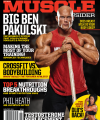John Robert Cardillo

John travelled the world to learn the best training and nutrition principles and trained alongside top pro bodybuilders at Gold's Gym California. He was a student of Arthur Jones, inventor of Nautilus and Medx Fitness machines, and the pioneer of hi-intensity training. John developed the HIT3 Training System, which transformed his physique to win countless bodybuilding competitions at just 18 years of age! He was also the first bodybuilder to utilize Faradic Electric Muscle Stimulation in his training and intermittent fasting during his competition prep. John’s SHREDDED Nutrition Diet helped him build one of the most shredded physiques of all time. His diet program incorporates fasting and nutrient timing to help athletes build lean muscle while losing body fat.
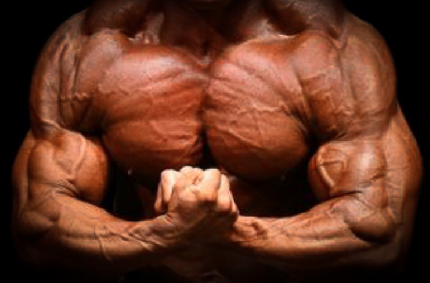
What Is the Significance of the Muscle Pump By John Robert Cardillo
 When an exercise is performed, the blood pushed into the body part being worked is known as the “pump.” One of the biggest misconceptions in the workout world today is that the muscle pump is indicative of muscular growth. It is clearly not. To understand this fully, we have to look at the makeup of a muscle cell, including the veins and capillaries that supply it. We need to understand the following:
When an exercise is performed, the blood pushed into the body part being worked is known as the “pump.” One of the biggest misconceptions in the workout world today is that the muscle pump is indicative of muscular growth. It is clearly not. To understand this fully, we have to look at the makeup of a muscle cell, including the veins and capillaries that supply it. We need to understand the following:
- Blood (red and white blood cells) cannot enter a muscle cell.
- Arteries, Veins and capillaries don’t pass through muscle cells. They’re situated in a web-like formation around muscle cells.
- Arteries, arterioles and capillaries transport fluid (except blood) with nutrients, oxygen, hormones and enzymes to muscle cells.
- Veins, venules and capillaries move blood back to the heart.
- When excessive amounts of blood are pushed into a body part, the vasculature within the muscle will vasodilate. Over time and years of training, the vasculature located in major body parts cause widening of the blood vessels. This causes temporary muscle size increase when exercising.
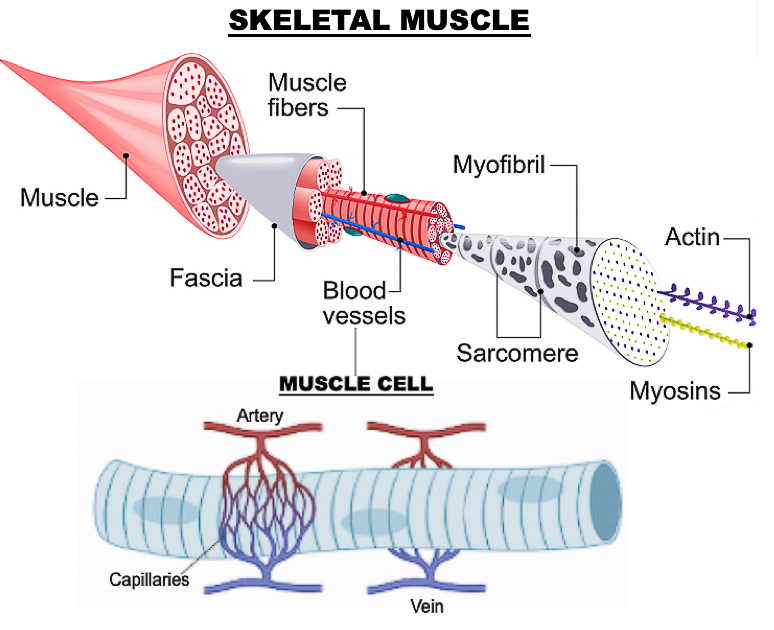 We can look at this from two perspectives:
We can look at this from two perspectives:
First, the proof: Training at high repetition ranges (e.g., 15 to 30) that are conducive for creating a pump doesn’t lead to much muscle work (per repetition), which results in little muscle growth. For example, lifting 10 pounds 30 times will eventually lead to a muscle pump, but won’t yield much muscle growth. However, training in repetition ranges that require considerable muscle work optimizes muscle growth. Lifting 40 pounds 10 times and reaching some level of muscle fatigue does lead to muscle growth. That’s because the pump, although it may lead to some temporary muscle girth increase, isn’t the important driver of muscle growth. The main driver of muscle growth is “adequate” stimulation resulting from high-intensity anaerobic exercise (intensity/load).
Second: The mechanism: The muscle pump is a reaction to the muscle’s need for nutrients and oxygen (as well as the removal of “waste products” such as carbon dioxide). The pump can push more water into the muscle cell, causing a stretch on the muscle cell membrane, which may seem like and be mistaken for muscle growth. The more serious muscle growth driver is the stretch caused by the contractile units (myofibrils containing myosin and actin) as they interact to resist a heavier weight during the performance of high-intensity exercise.
Carbohydrates and Muscle Size
 Another illusion of muscle size increase is the effect that carbohydrates have on muscle girth. In our daily diet, ingested carbohydrates are broken down to glucose molecules, which are transported into muscle cells (with the help of insulin) to be used for energy. When excessive amounts of carbohydrates are ingested (carbohydrate loading), the extra glucose that isn’t needed is stored in the cells’ cytosol as a chain of glycogen (for later use). Each glycogen molecule will then attach and hold three molecules of water, causing the muscle cell to expand until the glycogen is used up for energy and the water is released back into the blood system. This is the reason that when people go on a zero-carbohydrate diet, they instantly lose a great deal of weight after the first week. It’s due mostly to water loss.
Another illusion of muscle size increase is the effect that carbohydrates have on muscle girth. In our daily diet, ingested carbohydrates are broken down to glucose molecules, which are transported into muscle cells (with the help of insulin) to be used for energy. When excessive amounts of carbohydrates are ingested (carbohydrate loading), the extra glucose that isn’t needed is stored in the cells’ cytosol as a chain of glycogen (for later use). Each glycogen molecule will then attach and hold three molecules of water, causing the muscle cell to expand until the glycogen is used up for energy and the water is released back into the blood system. This is the reason that when people go on a zero-carbohydrate diet, they instantly lose a great deal of weight after the first week. It’s due mostly to water loss.
How Does The Vascular System Work Within The Muscle To Cause The pump?
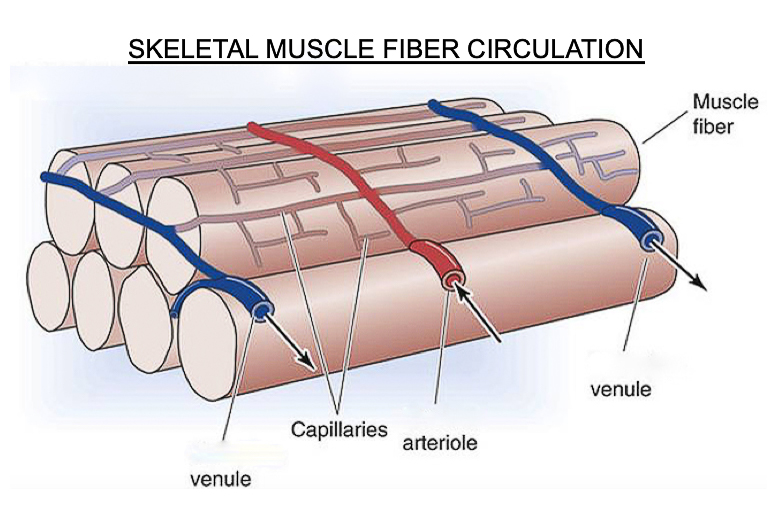 The vascular system is primarily made up of veins and arteries. As the vast highway of veins and arteries expand throughout the body, they become smaller units of vessels until they transport the blood to its destination. The arteries become smaller vessels called arterioles and from there even smaller vessels called capillaries. As this component of the vascular system disperses throughout the body by its subsequent smaller branches, it carries nutrients and oxygen rich blood away from the heart to the organs and muscles that need it to survive. On the other hand, veins also become smaller vessels called venules and, like arteries, even smaller vessels also called capillaries. But the function of this branch of the vascular system is to carry deoxygenated blood toward the heart.
The vascular system is primarily made up of veins and arteries. As the vast highway of veins and arteries expand throughout the body, they become smaller units of vessels until they transport the blood to its destination. The arteries become smaller vessels called arterioles and from there even smaller vessels called capillaries. As this component of the vascular system disperses throughout the body by its subsequent smaller branches, it carries nutrients and oxygen rich blood away from the heart to the organs and muscles that need it to survive. On the other hand, veins also become smaller vessels called venules and, like arteries, even smaller vessels also called capillaries. But the function of this branch of the vascular system is to carry deoxygenated blood toward the heart.
When we exercise, blood is shunted away from our internal organs towards the muscles being exercised. For instance, if you do a set of curls, the body will provide more blood to the arms and less to the intestines. Since there is a finite amount of space in the arms, between the muscle cells, the extra blood pushes the cells outward creating the pump. This is temporary and lasts only until the exercises stop and the need for increased blood flow in the area is no longer necessary.
How The Body Actually Delivers Nutrients To The Muscle Cell
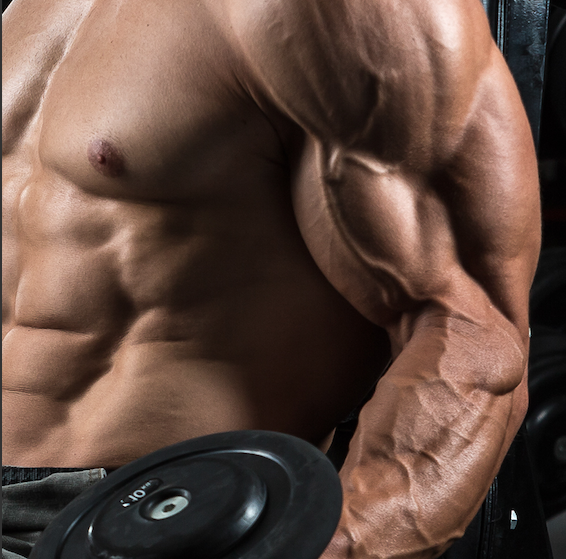 Let’s continue using the arm curls as an example. You begin curling a weight and the muscle cells are using large amounts of energy as well as oxygen. As such, the body increases blood flow with nutrient rich blood containing the necessary glucose and oxygen to the arms. Large quantities of blood arrive to the biceps and are squeezed into the arterioles and subsequently, the capillaries. This delivers glucose and oxygen to the space between the capillaries and the muscle cell called the “interstitial space”. The interstitial space provides the right environment for movement of nutrients across the cell wall through interstitial fluid. The muscle cell now has access to the glucose molecules and oxygen it needs. With this access, the muscle cell absorbs the nutrients and oxygen and generates the necessary energy to be used in the next muscle contraction.
Let’s continue using the arm curls as an example. You begin curling a weight and the muscle cells are using large amounts of energy as well as oxygen. As such, the body increases blood flow with nutrient rich blood containing the necessary glucose and oxygen to the arms. Large quantities of blood arrive to the biceps and are squeezed into the arterioles and subsequently, the capillaries. This delivers glucose and oxygen to the space between the capillaries and the muscle cell called the “interstitial space”. The interstitial space provides the right environment for movement of nutrients across the cell wall through interstitial fluid. The muscle cell now has access to the glucose molecules and oxygen it needs. With this access, the muscle cell absorbs the nutrients and oxygen and generates the necessary energy to be used in the next muscle contraction.
After the blood is depleted of the nutrients and oxygen, the capillaries take the deoxygenated blood to the venules and subsequently the veins and travels back to the heart to start this cycle over again.
For more info on John Cardillo, check out his website at johnrobertcardillo.com or right here at Muscle Insider at John Cardillo.

